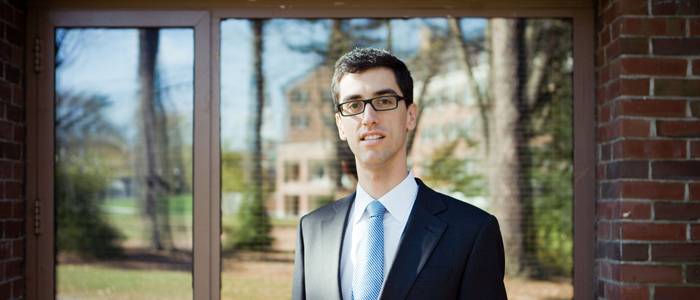On the Bubble
Manuel Adelino finds a new way to measure the effect of credit on home prices and offers new evidence that cheap credit alone was not to blame for the bubble.

Manuel Adelino finds a new way to measure the effect of credit on home prices and offers new evidence that cheap credit alone was not to blame for the bubble.
For housing-market scholars, it is the classic chicken-or-egg question: Does easier access to credit fuel an increase in home prices? Or do rising home prices spur banks to offer easier lending terms?
The link between home prices and access to credit has long been known. But since the real estate bubble burst in 2007, researchers have debated whether cheap credit alone fueled the six-year run-up in housing prices or whether speculation and other factors are to blame.
In a new study, Tuck assistant professor Manuel Adelino and his colleagues have come up with a way to measure the effect of credit on home prices. By directly measuring the relationship between price sensitivity and credit, they add new evidence to the argument that cheap credit was but one of a number of factors that fueled the housing bubble.
The researchers found that a reduction in interest rates does lead to an increase in prices. Between 2000 and 2006 real interest rates for mortgages dropped about 2 percent, and Adelino and colleagues found that the rate change could explain a 12 to 15 percent rise in home prices. While significant, that was hardly the only factor that drove the doubling of prices between 2000 and 2006. “It’s big, it’s important, but it’s not enough to explain the whole boom,” Adelino says.
To measure the effect of credit conditions, they looked at home prices in 10 metropolitan areas on either side of the price limit at which Fannie and Freddie are allowed to purchase home loans from banks. That figure, known as the conforming loan limit (CLL), varies by county and year.
In 2010 the CLL for single-family homes was $417,000 in most rural areas and as high as $729,750 in the most expensive cities. Since loans above the limit—known as jumbo loans—are considered more risky, they carry higher interest rates and more stringent conditions than conforming loans. During the boom, rates on jumbo loans were typically 0.25 percent higher.
While that may not seem like much, it amounts to $750 in the first year of a $300,000 mortgage.
Given that the price difference for homes on either side of the limit was just 0.5 percent, Adelino says the housing bubble cannot be fully explained by the interest-rate policies of former Federal Reserve Chairman Alan Greenspan or Fannie Mae’s expanded mortgage portfolio. Group psychology too may have played a role. “People start believing that house prices will go up and those expectations just become self-fulfilling,” he says. “Until the music suddenly stops.”
The effect of the government guarantee on prices became even smaller in the later years of the boom as access to jumbo loans and second mortgages expanded, the new research shows. The data also show that the effect was greater in regions that experienced declining incomes, indicating that when economic conditions become difficult, home prices become more sensitive to credit conditions.
Additionally, the new paper provides policymakers with data that illustrate the impact that eliminating Fannie, Freddie, and other government-sponsored mortgage agencies would have on the housing market. “If you do away with Fannie Mae and Freddie Mac, will it matter?” Adelino asks. “The answer is yes. If you wind them down, you’re likely to see a negative impact on house prices.”
The study also demonstrates the extent to which government mortgage guarantees, which are intended to expand home ownership, also help sellers by boosting prices. “When you give these subsidies in the form of a reduction in interest rates, part of the subsidy goes to the seller of the house,” Adelino says.
M Adelino, A Schoar, F Severino, “Credit Supply and House Prices: Evidence from Mortgage Market Segmentation,” working paper
Antoinette Schoar is the Michael M. Koerner (1949) Professor of Entrepreneurship at the MIT Sloan School of Management. Felipe Severino is a Ph.D. student at Sloan.